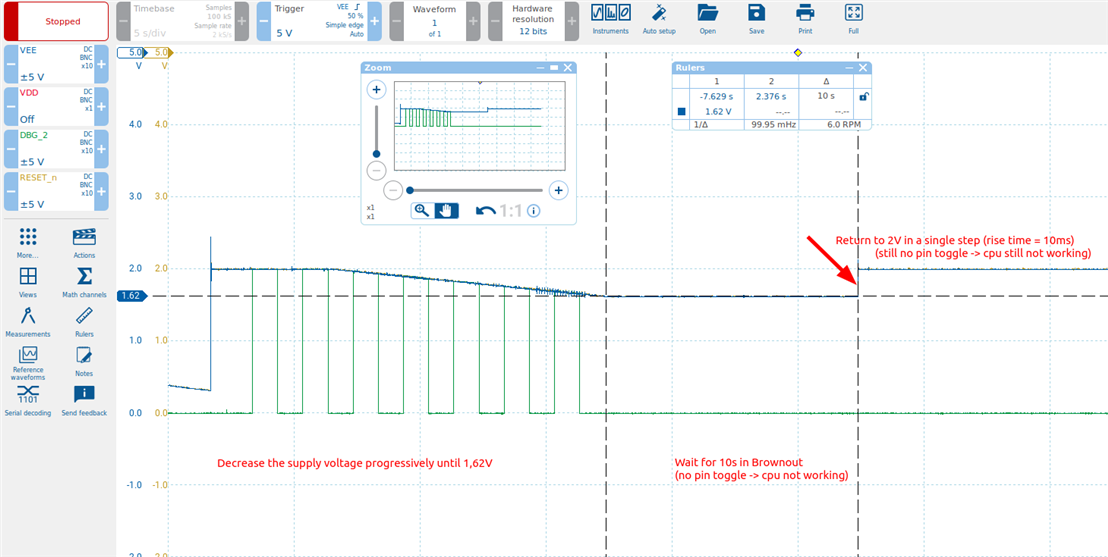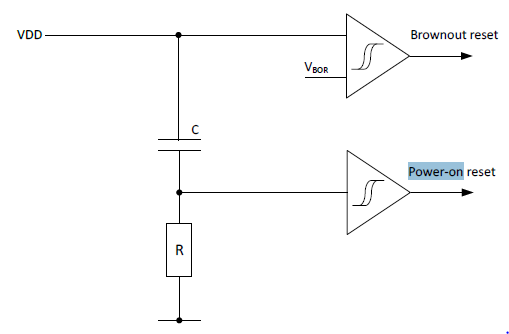Hello,
we run an application on a custom board with nRF52840 powered by an external power supply and buffered by a supercap. The supercap then provides the energy for the nordic chip for a few minutes when the external power supply is removed. We noticed the following phenomenon:
When the external power supply is removed, the nordic supply voltage slowly decreases and reaches the brownout voltage -> the cpu stops working, which is expected. However, when the nordic supply voltage stays in that range (around 1,6v) for around 10s and we then reconnect the external power supply, the nordic chip won't boot in most of the times. Note that the rise time is well within the specifications (10ms rise time).
In order to isolate the problem from the supercap: I managed to reproduce the fault using the following setup:
I removed the super cap intervention, so that the external power supply is now directly connected to the nordic mcu. Steps to reproduce:
- Progressively decrease the external power supply voltage from 2V in 10mV steps every 200ms until reaching 1,62V (BOV)
- Then wait for 10s at that level (1,62V)
- Then increase the power supply voltage in a single step from 1,62 to 2V (rise time ~ 10ms)
These steps are also documented on the following waveforms. (a .csv file and a .psdata file are also attached, to be read using PicoScope Software)
In Blue is the Vcc voltage (nordic voltage). In Green is 1s pin toggle used as an indicator whether the mcu is working or not. As shown in the image below, before reaching the Brownout voltage, the mcu is working properly (pin is toggling). From the BOV, the mcu stopped working. Even after re-applying the voltage in a single step the cpu is still not working (pin toggle is still off).

In order to be able to repeat this test, the supply voltage needs to get very low to cause a power cycle of the nordic chip.
Question: Any input/comments on why is this happening? Is this an expected behaviour? Why is the mcu not working after applying a voltage (2V) with small rise time?
Any help will be much appreciated.



